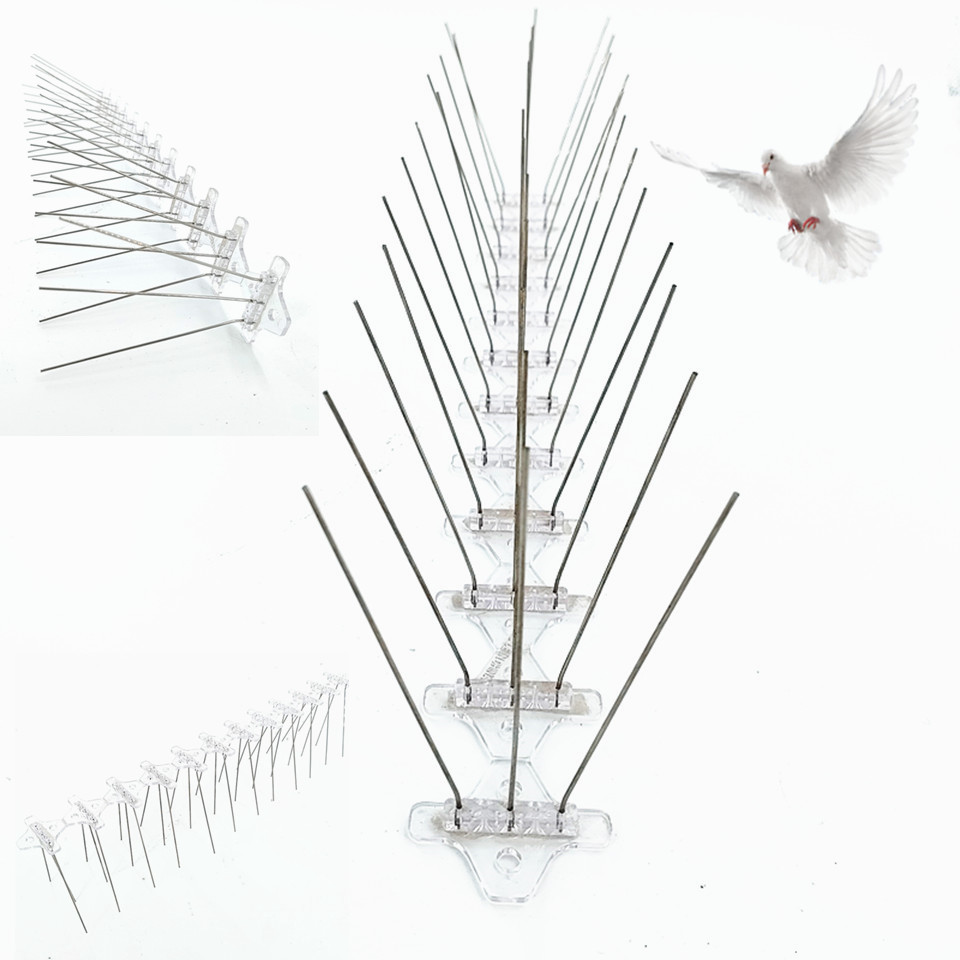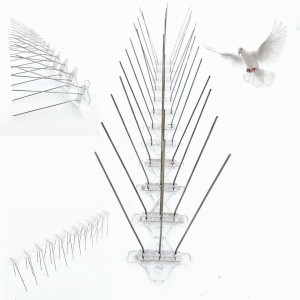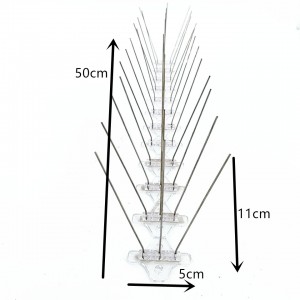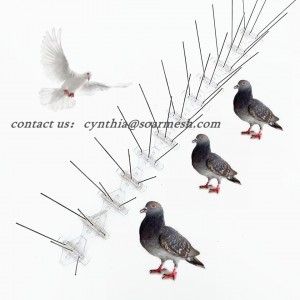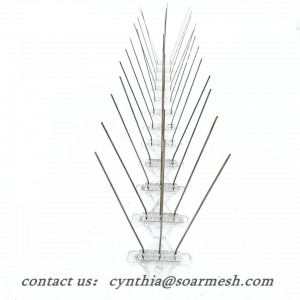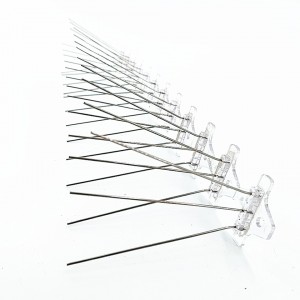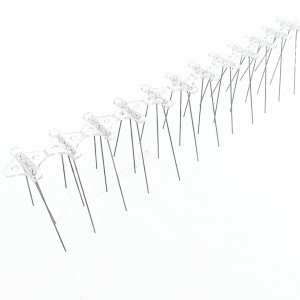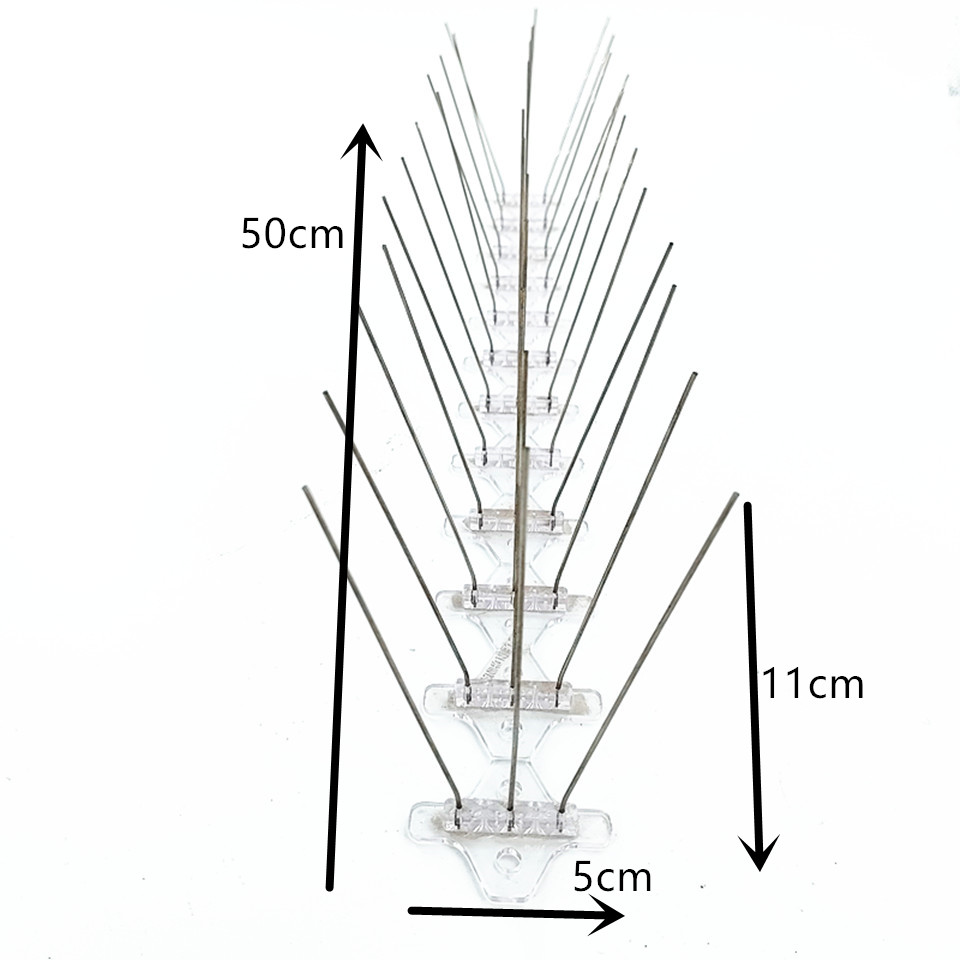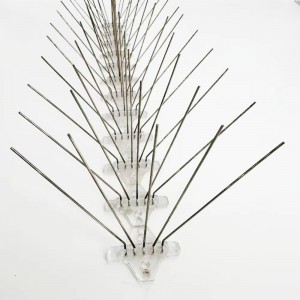Bird Spikes On Roof Plastic Bird Deterrent Spikes Invisible Anti Bird Spikes
Bird Spikes On Roof Plastic Bird Deterrent Spikes Invisible Anti Bird Spikes
| Item No. | HBTF-PBS0901 |
| Rows of Spikes | 12 |
| Material of Base | • UV-treated |
| Material of Spikes | ss304 ss316 |
| No. of Spikes | 36 |
| Length of Base | 48 cm |
| Width of Base | 5 cm |
| Length of Spikes | 11cm |
| Diameter of Spikes | 1.3cm |
| Weight | 88.5g |
Contact Cynthia to get the free samples: cynthia@soarmesh.com
Prevent Pigeon Birds from landing anywhere….
DIY and easy to install marine grade stainless steel spikes provides 100% protection on rooftops, ledges, fences, and more and require zero maintenance and can last a lifetime.
KEY FEATURES
- Prevent pigeons, indian mynas, sparrows, starlings and other pest birds from perching on your property.
- Great for any surface and application.
- Long-lasting polycarbonate base and stainless steel spikes provides years of maintenance-free protection.
- Easy to install – Attach quickly with UV stabilised silicon adhesive, nails, screws, cable ties, etc.
- Transparent Polycarbonate base – is practically invisible.
- Flexible – Mount easily on curved. flat or irregular surfaces.
- Non-lethal and Environmentally friendly. Bird Spikes do not harm or injure birds.
- Economical and lightweight – Sturdy polycarbonate base does the same job as stainless steel at a fraction of the cost.
The Best DIY (Do-It-Yourself) Pigeon Deterrent
Faced with a pigeon problem, one’s initial reaction is generally to look into the pest control market for the right device to eliminate the problem.
However, one also generally tends to find that the variety of options are nearly endless, and one might spend hours and hours researching various products and their often biased reviews online only to end up even more confused then when they began their investigation.
Is there such a thing as a truly DIY pigeon deterrent, and does pigeon control necessarily have to be expensive? Where do you even start?
Given the bewildering amount of conflicting information available online, the purpose of the following article is to clearly lay out the various options for pigeon control, what kinds of situations each option works best for, and the amount of money you need to spend in an impartial manner.
For instance there are a number of highly economical options which are just as effective as some relatively expensive options that may companies are not going to talk about (because they want you to buy their products), but we are here to give it to you straight.
In order to let you skip over information that is not useful for your particular pigeon issue and location, we have organized the following information into categories based on the kind of pigeon problem that you are having.
All pigeon problems can essentially be divided into two different groups: daytime perching vs overnight roosting. Depending on which of these categories your issue falls into, there are going to be different ways of going about solving it.
In the first scenario (daytime perching), what is happening is that the pigeons are simply using your home or place of business as a temporary stop while exploiting some nearby food source. In the second (overnight roosting), what is happening is the pigeons are using your home or building to breed and nurse baby pigeons.
The best way to figure out which issue you have (if it is not already immediately obvious) is to observe when your pigeons are active.
If they seem to be around pretty much all day long, then what you have is more likely merely daytime perching. However if your pigeons seem to be more active around dawn and dusk, then it is more likely the case that you have some overnight roosters spawning new pigeons.
Once you have determined which of these two types of pigeon issues you have, you can skip to the appropriate section to see which deterrents are best suited to dealing with which kind of problem.
